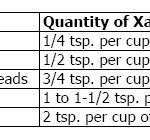It’s 2016 and I’m sure as soon as the clock struck midnight everyone was thinking about those little resolutions they were making the last few weeks of December. The new year always brings a fresh slate for me and I love thinking of all the possible things I can do to make life more fun…or as I’m getting older it seems to be more about healthy goals!
As I sit in coffee shops and in restaurants I’m surrounded by hopeful and anxious people talking about how this will be the year they will lose 25 pounds, or run the Tele 10 or cut “junk food” out of their diets completely….it inspired me to reflect on my year as an intern for Dietetics. I sat in a class and the instructor was talking about SMART goal setting and I thought…this is golden, more people should think about setting goals this way. So here it is. When you’re thinking about losing 25 pounds and running 16 km and right now you can’t run 1, you might be setting yourself up for failure. SMART goal setting is about making small, achievable goals and staying positive.
Steps To Goal Setting
Step 1: Identify Your Goals. What exactly would you like to accomplish?
Feeling better about yourself, Eating healthy, Becoming more active?
Consider the SMART Principle: Specific, Measurable, Attainable, Relevant, Timely
Step 2: What Is Important To You?
On a scale from 1 to 10, evaluate how important each of the goals are to you. The goals to focus on are those you score a 7 or higher. Pick which of the goals to tackle first. Try asking yourself which issues will make the biggest impact in your life and which goals are most relevant and positive.
For example: Goal 1: To eat 1 more piece of fruit and 1 veggie each day. Goal 2: Lose 25 pounds for a wedding your standing in (or your own wedding).
Which goal is more positive, relevant, attainable and long term? Goal 1 is simple and attainable and will certainly add more nutrients to your diet. Step 2 is more negative and stressful because you aren’t really trying to accomplish the goal for yourself or your health.
Step 3: Road Block Analysis
What road blocks stand in the way of you reaching your goals?
- lack of knowledge or skills
- physical environment
- lack of social support
- cost/complexity
- social occasions/holidays
- stress
- time (time of day/week) or lack of time
- weather/season
- meals away from home
- physical limitations (health conditions)
- job
- travel/vacation
**Think of strategies to get through each of the road blocks you come up with.
For example:
Road Block: You are traveling a lot (job, travel)
Solution: Try shopping at a grocery store and keeping some fruit, veggies and nuts in your hotel room.
Road Block: You aren’t sure what you should be eating or how to go about preparing a healthy meal (lack of knowledge/skills)
Solution: Ask your Doctor about a referral to a Registered Dietitian.
Let’s bring it all together. We have thought about what goals to set, how important they are to us and how to effectively swerve around any road blocks that could get in our way to reaching this goal.
So, how do we use this strategy to make a SMART goal?
S-Specific, this is the what, where, how when and with whom part of the goal.
For example: I want to run the tele 10
M-Measurable, break down the goal into things you can measure. Quantity and time can be measured.
For example: I will run the tele 10 in July
A-Attainable: Is the goal attainable? Will you actually be able to accomplish this goal by the date you have set?
For example: Its June and you have never run before, will you be able to run 16km by July?
R-Relevant, is the goal relevant to you? Do you like running or would you rather get your cardio from joining a rec hockey or ultimate frisbee league?
T-Timely, set an end date for your goal.
For example: I will run 1 km EACH week.
Now that we have created a SMART goal together I hope you are feeling better about your goals. Its better to make a goal like, I will only eat “junk food” on Saturdays, rather than, I will NEVER eat “junk food” again. Set yourself up for a WIN! 2016 is your year!













